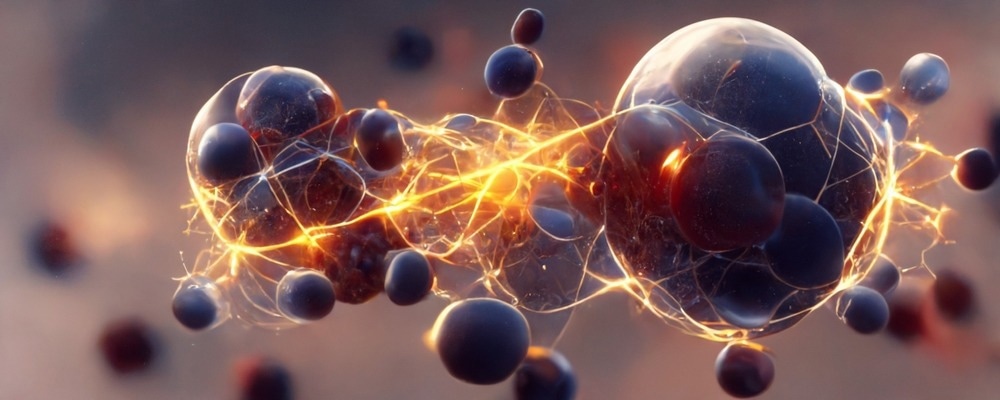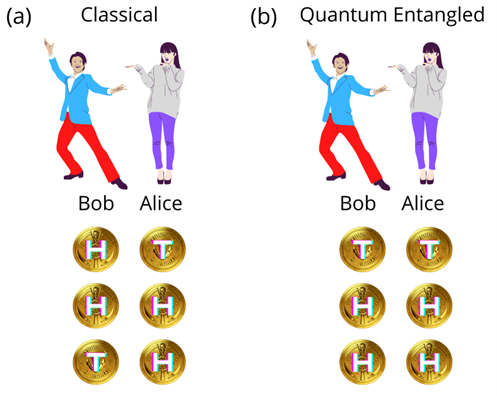Scientists from Cornell University, Stanford University, and the US Department of Energy’s (DOE) Brookhaven National Laboratory have successfully entangled atoms for the first time in order to create networked quantum sensors. These sensors are produced for ultra-precise atomic clocks and accelerometers. The outcome, which was published in Nature, was partially funded by Q-NEXT, a National Quantum Information Science Research Center run by the Argonne National Laboratory of the DOE.

Image Credit: CI Photos/Shutterstock.com
The experimental setup used by the study team produced highly accurate measurements of both time and acceleration. Their accuracy in time was 3.5 times better, and their acceleration measurements showed 1.2 times more precision, compared to a similar setup that does not rely on quantum entanglement.
Motivation
Atomic clocks and accelerometers with greater sensitivity enable more accurate timekeeping and navigation systems. Some examples where extremely accurate clocks are employed include broadcast communications, global positioning systems, the military, and the financial and trading sectors.
While a standard GPS detects a location with an approximate accuracy of one meter, GPS technology driven by an atomic clock can improve the accuracy to within a centimeter.
The atomic oscillations that occur naturally in an atomic clock function similarly to a grandfather clock's pendulum. But because atomic oscillations have a far higher frequency and are much more stable, atomic clocks are significantly more accurate than conventional clocks. Atomic clocks are among the most precise timekeeping systems ever created, with an error of just 1 second in up to 100 million years.
Quantum Entanglement
Entanglement is a unique feature only observed in quantum systems. Figure 1 can be used to follow a short explanation. There are two outcomes when a coin is tossed. head or tail (denoted as H and T in figure 1). Assume Alice and Bob (figure 1), two users, independently toss their coins in two distinct locations. Each coin toss result will be 100% random, with no relationship between the two. If the pair of coins are considered to be quantum states, then they can be entangled according to quantum mechanics.
When the coins are entangled, they produce the same result when Alice and Bob separately toss them in two distinct locations. Regardless of their distance, Bob will also have a "head" when Alice does. This phenomenon, referred to as "spooky action at a distance" by Albert Einstein is quantum entanglement.

Figure 1: Outcomes of independent coin tosses in two distant locations by Alice and Bob where (a) shows random outcomes and (b) shows the outcomes under quantum entangled conditions. H and T denote the head and tail faces of a coin.
Experimental Details
In the current work, the researchers developed a clock network with up to four nodes that are entangled by a shared quantum nondemolition measurement. A description of performing a photonic nondemolition measurement is outlined in the publication. Nonlocal entanglement among network nodes is shown to provide superior scaling with network size.
In the experiment, rubidium atoms are divided into two groups of around 100,000 atoms each while they are trapped inside a cavity. Traditional laser cooling and trapping techniques were used to produce the ultracold ensemble. Two cavity mirrors are placed between the atomic ensembles. With each pulse, light is directed to reflect continuously between the mirrors, traveling through the atomic ensembles. The atoms become entangled by the interrogating laser beams.
The atomic ensemble can be used to detect very weak interactions when microwaves are applied across the two atom groups. The atoms that resonate with the microwave's specific frequency react by changing to a different state.
In a similar fashion, a portion of the atoms in each group reacts by changing their quantum state when a specific acceleration is applied to the system. The two entangled atomic groups behave as if they were two clock faces or two accelerometer values.
The number of atoms in each group that changed states is counted using sophisticated experimental schemes. The difference in the applied microwave frequencies to the two groups, and consequently the difference in the groups' readings of time or acceleration, were calculated using the data.
The results from the experiment showed that entanglement enhances the accuracy of the frequency or acceleration difference. The observations revealed that when the clocks were entangled, the time measurements in two locations were 3.5 times more accurate than when they were running independently. With entanglement, the measurements of acceleration were 1.2 times more accurate.
Using this setup, the researchers were also able to network four different atomic ensembles in four different locations. The distance between the two groups of atoms was around 20 micrometers. While the distances between the groups of atoms were small, time or acceleration can be compared between four different locations with an unprecedented level of sensitivity.
Outlook
Future entanglement across longer distances would be made possible by a common quantum non-demolition measurement from an array of distributed cavities. This could be accomplished through photonic linkages and shared probe light. The limits of accurate time and gravity measurements would be further pushed by using this technology with squeezed optical clocks.
References and Further Reading
Malia, B.K., Wu, Y., Martínez-Rincón, J. et al. Distributed quantum sensing with mode-entangled spin-squeezed atomic states. Nature (2022). https://doi.org/10.1038/s41586-022-05363-z
Sivarajah, I. (16 December 2021) Building Quantum Networks to Connect the World.
[Online] AZoQuantum.com. Available at: https://www.azoquantum.com/Article.aspx?ArticleID=262
Hesla, L. (28 November 2022) The entanglement advantage: Sensing networks achieve greater precision through quantum entanglement.
[Online] Anl.gov. Available at: https://www.anl.gov/article/the-entanglement-advantage#:~:text=For%20the%20first%20time%2C%20scientists,measurements%20of%20time%20and%20acceleration
Disclaimer: The views expressed here are those of the author expressed in their private capacity and do not necessarily represent the views of AZoM.com Limited T/A AZoNetwork the owner and operator of this website. This disclaimer forms part of the Terms and conditions of use of this website.